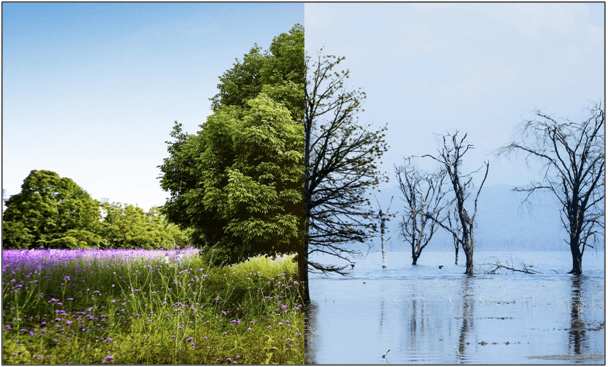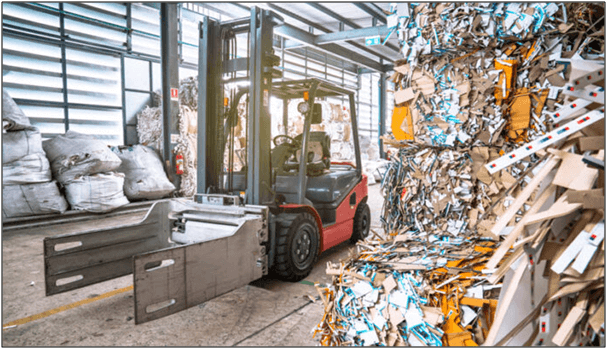With the international community more united to deter global warming and investors and customers accordingly more conscious of sustainability than ever, Green Reverse Logistics (GRL) becomes one of the most pressing agendas for top management of a company in the discrete manufacturing industry. If a company is determined to put the initiative into place throughout its supply chain, there are seven key points to consider. This article discusses these key points that comprise full commitment of leadership, as-is condition assessment, strategy, execution process and organization, cost, controlling mechanism, and external communication.

Table of Contents
Full Commitment of Leadership
GRL aims to recover and recycle environmentally sensitive materials, such as heavy metals, from end-of-life products and the reduction of such waste generated from the forward logistics from a company to its end users as packaging. The concept focuses on the environment, future generations, and society. As such, the overarching philosophy of GRL is totally different from that of a company’s generic operations pursuing its revenues and profits. On the other hand, in implementing GRL, it is necessary to gain buy-in from related business functions whose mission is to execute money-making operations. Examples of those functions are sales, marketing, finance, warehousing, customer service, and, most importantly, logistics. That is why decisive direction and championing of leadership matters to GRL. Without top management’s commitment, the environmentally friendly initiative may bear no fruit due to reluctance or inaction of those functions, which naturally prioritize profits over sustainability.
As-is Condition Assessment and Strategy
After the top management announces its commitment to GRL, a company should conduct a stock take on what products it manufactures, what materials and how much of them each product consumes, and how much waste its forward logistics generates. If the company has an ERP system in operation and keeps an item master and BOM updated inside it, it will be easy to obtain those pieces of information. Based on the assessment, a company should craft its GRL strategy. First, it should set an object scope, with an emphasis on the materials that it desires to recover, and the type of waste to minimize. The second point is coverage, and this examines the extent that the GRL would cover. This includes determining the choice whether it should focus only on end users or also on channel partners such as subcontractors, distributors, and retailers. The coverage decision includes a consideration of whether to extend to overseas markets other than the domestic market.

Thirdly, it should establish a goal for GRL. A paramount principle should be to make its reverse logistics friendly to the environment. It must conceive that cost reduction or revenue increase through product returns and remanufacturing, on which traditional reverse logistics concentrates, are secondary objectives. A goal can be to achieve a certain percentage of recovery rate and to reduce a certain amount/percentage of GHG (greenhouse gas) emission. A point companies must keep in mind is that a goal should be free from uncontrollable factors such as stock price and customer satisfaction. Lastly, it should consider resource allocation. This involves determining the resources that should be allocated to this eco-friendly initiative. A ballpark figure will do at this stage since the related budget will be specified later in parallel with detailing the GRL operations.
Execution Process and Organization
Keeping its GRL strategy in mind, a company should design processes and organization and execute operations. In doing so, it should not only look at logistics but also at other functions. For example, the green scheme should involve the product design function. To be more specific, product designers must be encouraged to practice DFE (design for the environment) to eliminate the usage of materials harmful to the ecosystem and to minimize waste generated from packaging. As its internal efforts cannot solely cover the entire horizon of GRL, a company must mobilize its partners. Careful design of an incentive/disincentive scheme for them will play a key role. Especially, cooperation from retailers is crucial since they have a direct touch point with end users, from whom returns usually trigger the initiative.
At the same time, a company should secure assistance from end users. Should they confirm if what they purchased is covered under the GRL policy, the company can mitigate the risks of being overflown by product returns. The processes should be as automated as possible by digital technologies. Some examples are portal sites or applications for end users to verify their purchased goods are returnable, returns management software shared with the channel partners to integrate all data on returns within the supply chain, RFID tags to track the movement of returns, and return forecasting tools to optimize resource planning.

It is important to improve operational efficiency by leveraging lean methods. For example, the company attaches a return kit (a special envelope and sticker, etc.) only to returnable products, so that it can avoid returns of the products excluded from the GRL scheme. That is an adoption of poka-yoke. When it comes to organization, if a company establishes a new cost center responsible for GRL, it will be difficult to optimize the operations since the existing business lines are free from incentives to align with the initiative. Thus, the company should make its business units take a part of the responsibility for GRL and track their performance with other key performance indicators than revenues and profits.
Cost Consideration
In reverse logistics, a company must expect its products to be returned from multiple origin sources (e.g., returns lockers, brick-and-mortar stores, e-commerce), despite their total volume being by far less than those going down through forward logistics. So much so that trying to build reverse logistics operations just the same as those of forward logistics on its own will never pay. Furthermore, material handling costs will be much higher than the generic logistics since the assortment of returned goods is irregular, unlike manufactured ones. Therefore, many companies are outsourcing their GRL operations to 3PL providers. For example, Samsung is partnering with the U.S. Postal Service (UPS) to recover and recycle Galaxy brand smartphones, tablets, etc. through its Trade-In program in the United States. Even in the case of outsourcing, a company should carefully specify who incurs transportation costs. The Waste Electrical and Electronic Equipment (WEEE) Directive of the EU emphasizes that end users should be able to return electric and electronic waste for free.
The full content is only visible to SIPMM members
Already a member? Please Login to continue reading.

